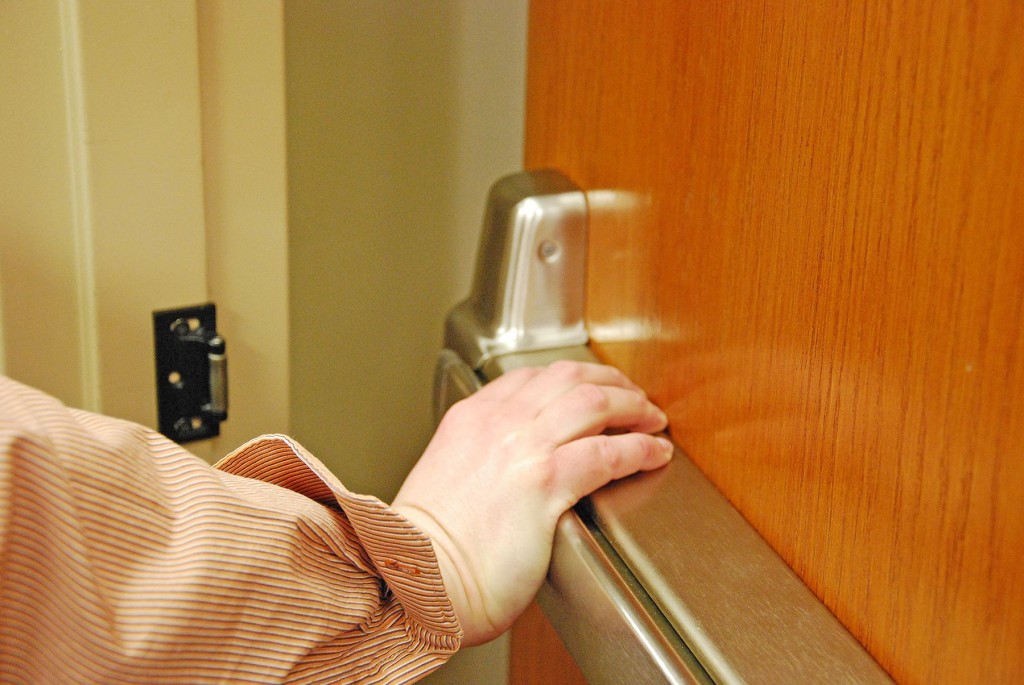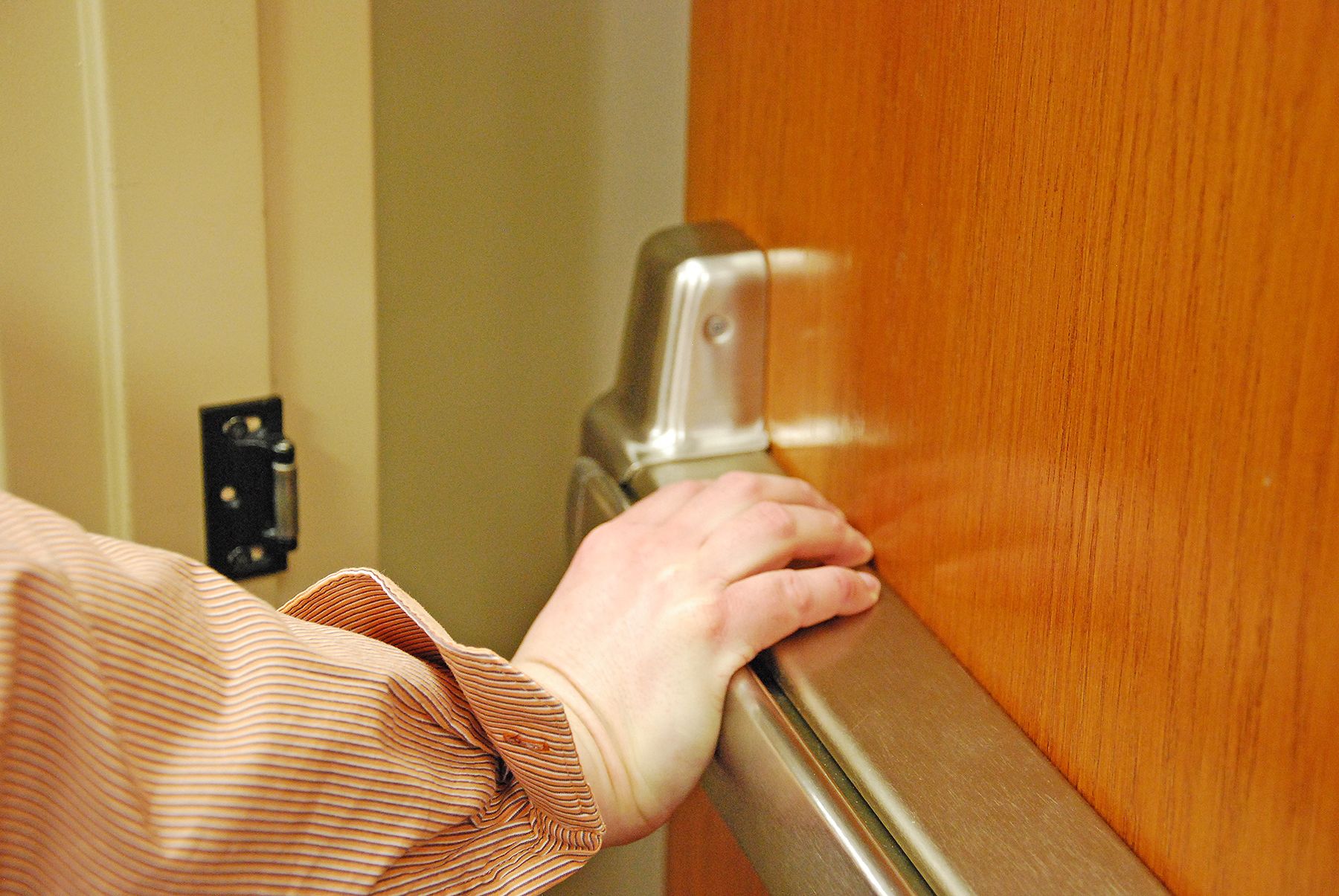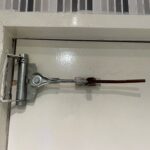This post was published in the May 2014 issue of Doors & Hardware
Updated December 2017
The 2010 ADA Standards for Accessible Design, effective in March of 2012, included an unexpected change regarding the maximum allowable force to operate door hardware. This modification to the standards was made as an editorial change, which is typically used to address errors or make clarifications that do not affect the scope or application of the code requirements. Editorial changes do not go through the normal code development process which would include committee hearings and opportunities for public comment.
 Prior to the 2010 edition, the ADA standards required door hardware to have “a shape that is easy to grasp, and does not require tight grasping, tight pinching, or twisting of the wrist to operate.” No force limitation was mentioned with regard to the operation of hardware. In fact, the paragraph relative to door opening force (different from operable force) stated that interior, non-fire-rated doors must have a maximum opening force of 5 pounds, but clarified the requirement by stating, “These forces do not apply to the force required to retract latch bolts or disengage other devices that may hold the door in a closed position.” This statement made it clear that the 5-pound force that applies to opening a door, does not apply to the operation of the hardware.
Prior to the 2010 edition, the ADA standards required door hardware to have “a shape that is easy to grasp, and does not require tight grasping, tight pinching, or twisting of the wrist to operate.” No force limitation was mentioned with regard to the operation of hardware. In fact, the paragraph relative to door opening force (different from operable force) stated that interior, non-fire-rated doors must have a maximum opening force of 5 pounds, but clarified the requirement by stating, “These forces do not apply to the force required to retract latch bolts or disengage other devices that may hold the door in a closed position.” This statement made it clear that the 5-pound force that applies to opening a door, does not apply to the operation of the hardware.
The 2010 edition of the ADA standards changed the paragraph that applies to door hardware:
404.2.7 Door and Gate Hardware. Handles, pulls, latches, locks, and other operable parts on doors and gates shall comply with 309.4. Operable parts of such hardware shall be 34 inches (865 mm) minimum and 48 inches (1220 mm) maximum above the finish floor or ground. Where sliding doors are in the fully open position, operating hardware shall be exposed and usable from both sides. (Refer to the standard for exceptions.)
By referencing paragraph 309.4, a limit for the operable force of hardware was established:
309.4 Operation. Operable parts shall be operable with one hand and shall not require tight grasping, pinching, or twisting of the wrist. The force required to activate operable parts shall be 5 pounds (22.2 N) maximum.
 This change created a conflict with existing codes and standards that include different limits for the operation of door hardware. For example, ANSI BHMA A156.2 – Bored and Preassembled Locks and Latches includes a torque limit of 28 lbf-in for levers, while the various codes and standards applying to panic hardware require a maximum of 15 pounds to release the latch. The 15-pound limit is consistent across the International Building Code, the International Fire Code, NFPA 101 – The Life Safety Code, UL 305 – Panic Hardware, and ANSI BHMA A156.3 – Exit Devices. When the change to the ADA standards occurred, there was no known panic hardware or fire exit hardware that would consistently release with 5 pounds of force, while providing the necessary level of security and fire protection (since then, Von Duprin has introduced the AX device, which does meet the 5-pound requirement).
This change created a conflict with existing codes and standards that include different limits for the operation of door hardware. For example, ANSI BHMA A156.2 – Bored and Preassembled Locks and Latches includes a torque limit of 28 lbf-in for levers, while the various codes and standards applying to panic hardware require a maximum of 15 pounds to release the latch. The 15-pound limit is consistent across the International Building Code, the International Fire Code, NFPA 101 – The Life Safety Code, UL 305 – Panic Hardware, and ANSI BHMA A156.3 – Exit Devices. When the change to the ADA standards occurred, there was no known panic hardware or fire exit hardware that would consistently release with 5 pounds of force, while providing the necessary level of security and fire protection (since then, Von Duprin has introduced the AX device, which does meet the 5-pound requirement).
An additional conflict was created directly within the 2010 ADA Standards for Accessible Design with the added requirement for the door hardware to be operable with 5 pounds of force. The section on opening force still includes the statement that the 5-pound maximum opening force does not apply to the force required to retract the latches. The U.S. Access Board unofficially acknowledged that there was a conflict, but to date the standards have not been modified.
In an attempt to establish a standard for operable force that is aligned with other codes and standards, a change has been made to the 2017 edition of ICC A117.1 – Accessible and Usable Buildings and Facilities. This is the accessibility standard that is referenced by the International Building Code (IBC), and therefore applies to most new construction projects. This standard now includes the following limitations for operable force of hardware:
1. Hardware operation by a forward, pushing or pulling motion: 15 pounds (66.7 N) maximum.
2. Hardware operation by a rotational motion: 28 inch-pounds (315 N·cm) maximum.
Although the change to A117.1 might seem like a step toward coordination of the accessibility standards with the other codes and standards affecting hardware operation, the 2013 California Building Code (CBC) includes language that is virtually identical to the 2010 ADA operable force requirements. This edition of the CBC became effective January 1, 2014, and requires hardware to operate with 5 pounds of force, maximum.
Given the change to the CBC and the delay in addressing the conflict within the 2010 ADA standards, there are projects where the 5-pound limit is being enforced for both lever-operated hardware and panic hardware. Consult your local code officials to determine the requirements for your project’s jurisdiction, and your preferred hardware manufacturers to understand the available options.
This post was originally created on March 27, 2013, and was printed in the May 2014 issue of Doors & Hardware magazine.
You need to login or register to bookmark/favorite this content.








I always thought it was the resistance of the door closer that was the focus of the 5 or 15 lbs of opening force. That’s why we have door pressure gauges. Pushing the exit device or turning the lever is the easy part, no?
Yes, it was always the pushing/pulling of the door that was addressed by the standards – not the force to unlatch.
I am fine with the 15 pounds of force on the pushing or pulling but is it me or does the 28 pounds sound very heavy, I just checked 5 doors in my office that ranged from 2-4 pounds and then my office door which has very serious latch bind when closed because of a twisted door and it only came in at 12 pounds. Maybe the way I am checking it is no good, so I guess does a standard exists for the 28 pounds twisting.
It’s 28 inch-pounds…I didn’t do well in physics, but I think it’s different.
Sorry I did not notice the inch pounds note…
1 foot pound is equal to 12 inch pounds so 28 inch pounds is 2.333 foot pounds.
So what kind of tool is needed to measure 28 inch pounds?
It sounds like an opportunity for me to invent an iDigHardware-branded modified torque wrench! 🙂
Digital gauge could have inch/lb and/or ft/lb reading